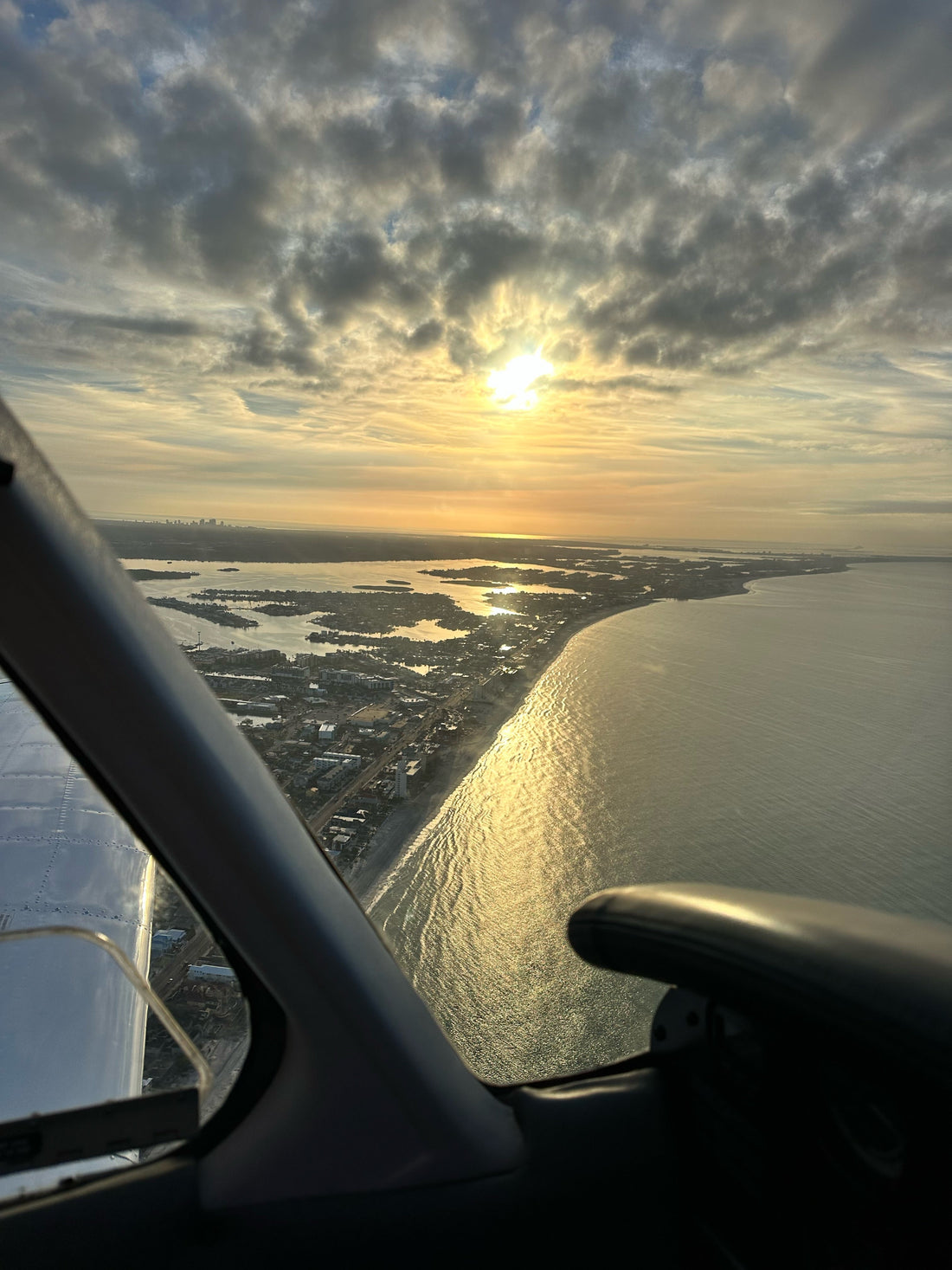
4 Common Private Pilot Oral Exam Questions And How To Ace Them
By Josh Page, CFI
The private pilot practical test marks the finish line to obtaining your private pilot certificate and becoming a licensed pilot. The practical test is divided into two parts: an oral portion, which covers the knowledge areas, and a flight portion where the student demonstrates various flight maneuvers.
You must pass the oral portion before you can hop in the plane with an examiner and demonstrate maneuvers. Let’s look at four common private pilot oral exam questions and see how you can ace them!
How to Prepare for the Private Pilot Oral Exam
Every examiner is a little different, but specific questions recur frequently. You don’t need to memorize every chart and regulation. You just need to build a strong understanding of core concepts, be able to explain them clearly, and apply them to real-world flying. Practice with your instructor, use real test scenarios, and stay sharp on your systems.
How Do You Recover from a Spin—and Where Does It Happen Most Often?
The examiner is required to test the applicant’s knowledge in a variety of safety areas. Recovery from a spin is a guaranteed subject to come up on your private pilot checkride.
So, how do you recover from a spin? Just remember the acronym PARE: Power idle, Ailerons neutral, Rudder opposite to the spin, and Elevator forward.
Remember that a spin occurs after a stall, and it happens when one wing is more stalled than the other. This is a situation you never want to get into, but it’s important to know how to recover if you do spin. If you don’t recover from a stall properly (nose forward to the horizon, full power), it’s exactly where you’ll end up.
Now let’s think about where this can happen around an airport. The most common area is your base to the final turn. It’s your slowest turn, and if you aren’t carefully watching your airspeed, you can get too slow in the turn, exceed your critical angle of attack, stall the airplane, and enter a spin. What’s terrible is that the base to final happens close to the ground. If you end up in a spin in that turn, there isn’t really time to recover.
Another place a spin can occur is in a go-around. When you decide to go around, you’re adding full power. What happens next? The nose pitches up, sometimes aggressively, because of how the airplane was trimmed on final approach, and all your flaps are generally still down (lots of lift there). If you don’t respond by pushing the nose forward immediately, you can quickly end up in a stall, followed by a spin to the ground.
Make sure you can explain how to recover from a spin – and avoid one altogether!
If the Alternator Fails, Does the Engine Quit?
You don’t need to be a mechanic to earn your private pilot certificate, but you do need to be familiar with your airplane’s systems in case you encounter a problem in flight. It’s very important to know how to troubleshoot problems so you can take appropriate action.
In the case of an alternator failure, you’d need to know that your alternator powers your electrical system – think your lights, radios, flaps if electrically controlled, etc. But your engine is powered by a different electrical source.
What is it? Your magnetos! If your alternator fails, you will NOT lose your engine! This is not a case for squawking “7700” and looking for a field to land in. If you treat it as such in the oral portion of your checkride, you’ll end it with a disapproval. Know your systems well!
What Does That Symbol Mean on the VFR Sectional?
You’re going to have to know your VFR sectional really well. I would become very familiar with the VFR sectional legend. It’s an immense help because it reveals the meanings of all kinds of symbols you’ll encounter on the sectional.
A good way you can prepare for your checkride is to have your CFI put their finger on random symbols on the sectional and test if you know what they stand for. When you don’t know the meaning, look it up and remember it for next time.
What Are the Visibility and Cloud Clearance Rules for Different Airspace Classes?
Just like the symbology on the VFR sectional, you’re going to need to know your airspace really well. This includes how much visibility you’re required to have and how far you need to remain above, below, and horizontally from clouds. Try this: Open up a paper sectional or use a digital one, close your eyes, and point to a random place.
Now, take a look at where you’re pointing and see if you know what airspace that is. Now, what are the cloud/visibility requirements there? Do this regularly until you can quickly identify airspace and name the cloud/visibility requirements.
As a private pilot, you’re going to be flying in a variety of airspaces. You must know what is required to follow FAA regulations. The examiner needs to see that you can do this! Take your time!
By the time you meet with an examiner for your private pilot checkride, you’ll have put in many hours of study and preparation. Take your time, relax, and think carefully through all their questions. More than anything, the examiner wants to see you succeed and earn your private pilot certificate! Good luck and happy flying!
